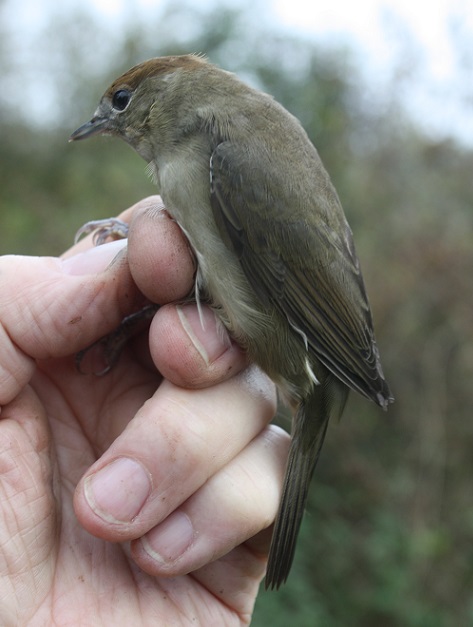Webb's Wood, Sunday 17th January 2016
As the forecast for today was little wind, no real rain, with the chance of a possible snow flurry I decided that we should have a go for Siskin in Webb's Wood. I was joined for the session by Andrew Bray and my friend, Fraser Bell, a C-permit holder currently on a one year contract with the prestigious Edwrd Grey Institute.
With the onset of colder weather, I set up a feeding station on Thursday, stocked with peanuts, nyjer seed, mixed grains and other seeds. The hoped for Siskin were heard throughout the morning but, unfortunately, have not yet found the feeding station and, although we had a couple flying around the lures, they were never interested enough to get caught. I will give it a couple of weeks of feeding the site and try again.
We had a pleasant enough session until some unforecast rain set in, bringing it to a premature end. The list for the day was as follows, New (Retrap): Great Spotted Woodpecker 1; Nuthatch (1); Treecreeper 1; Blue Tit 10(3); Great Tit 5(1); Coal Tit 1(4); Wren 3; Robin 3(1); Blackbird 2(1); Goldcrest 2; Chaffinch (1). Totals: 28 new from 9 species and 12 retrapped birds from 7 species.
The last bird processed was a fine specimen of an adult male Great Spotted Woodpecker:
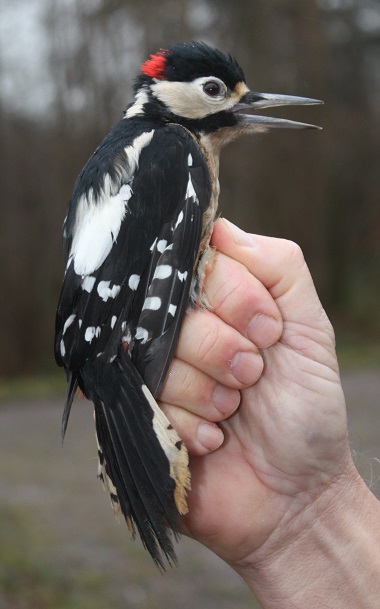 ST / AB / FB
ST / AB / FB

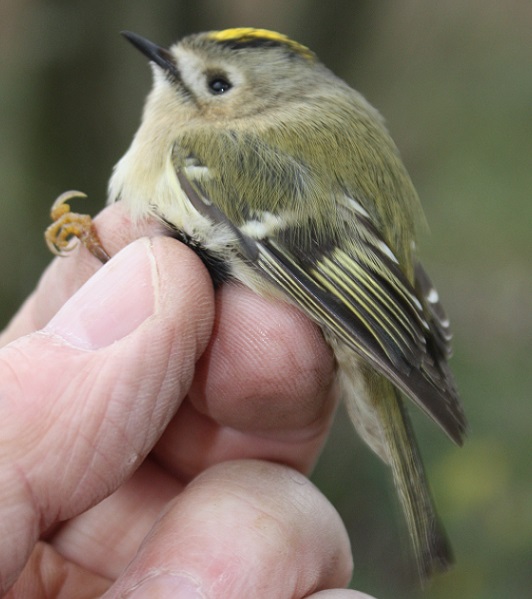
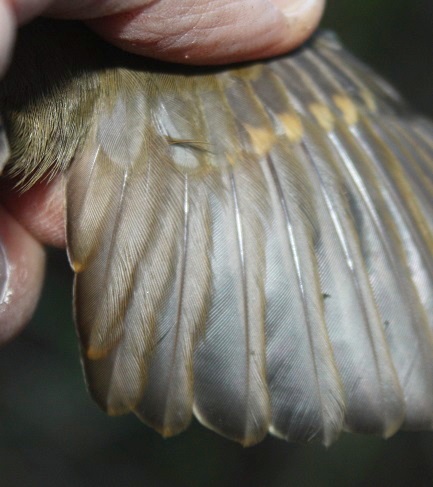
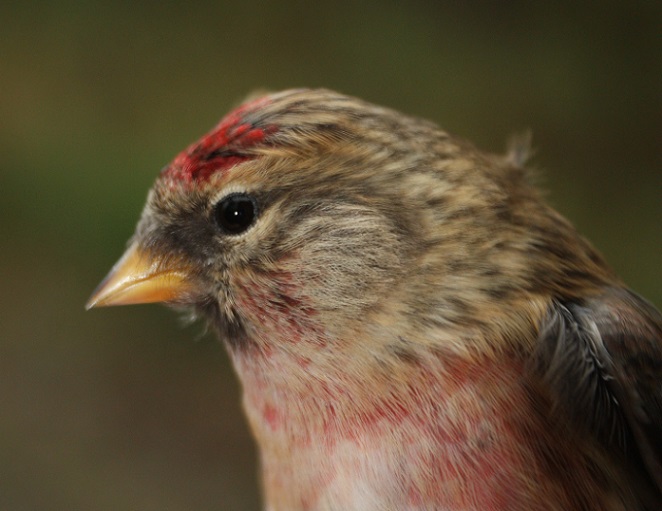
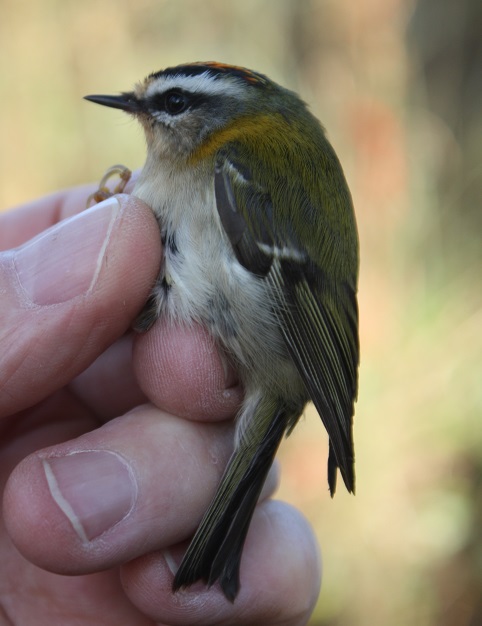
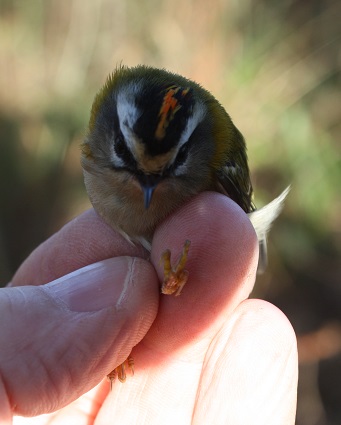
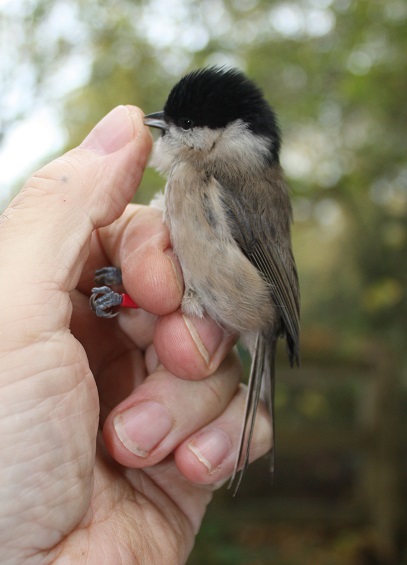
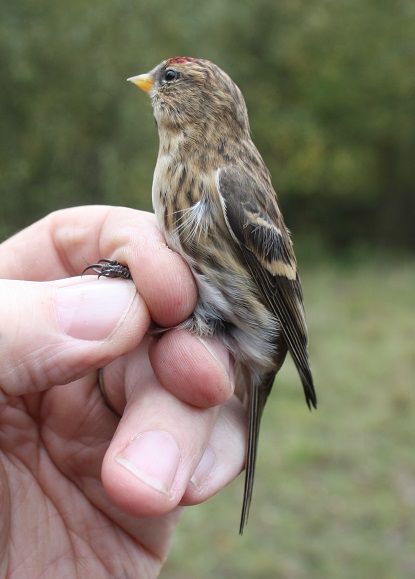 ST / JC
ST / JC